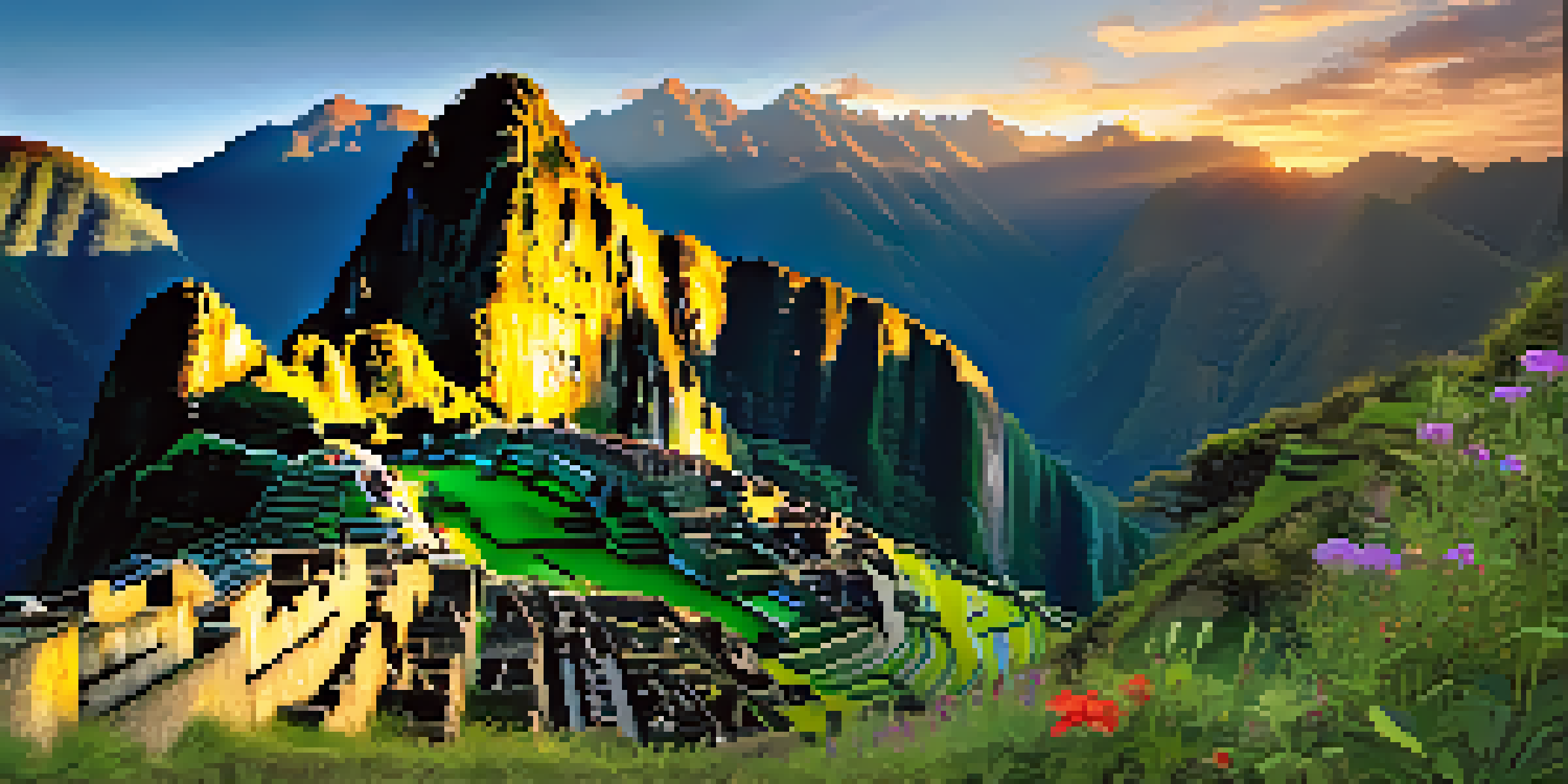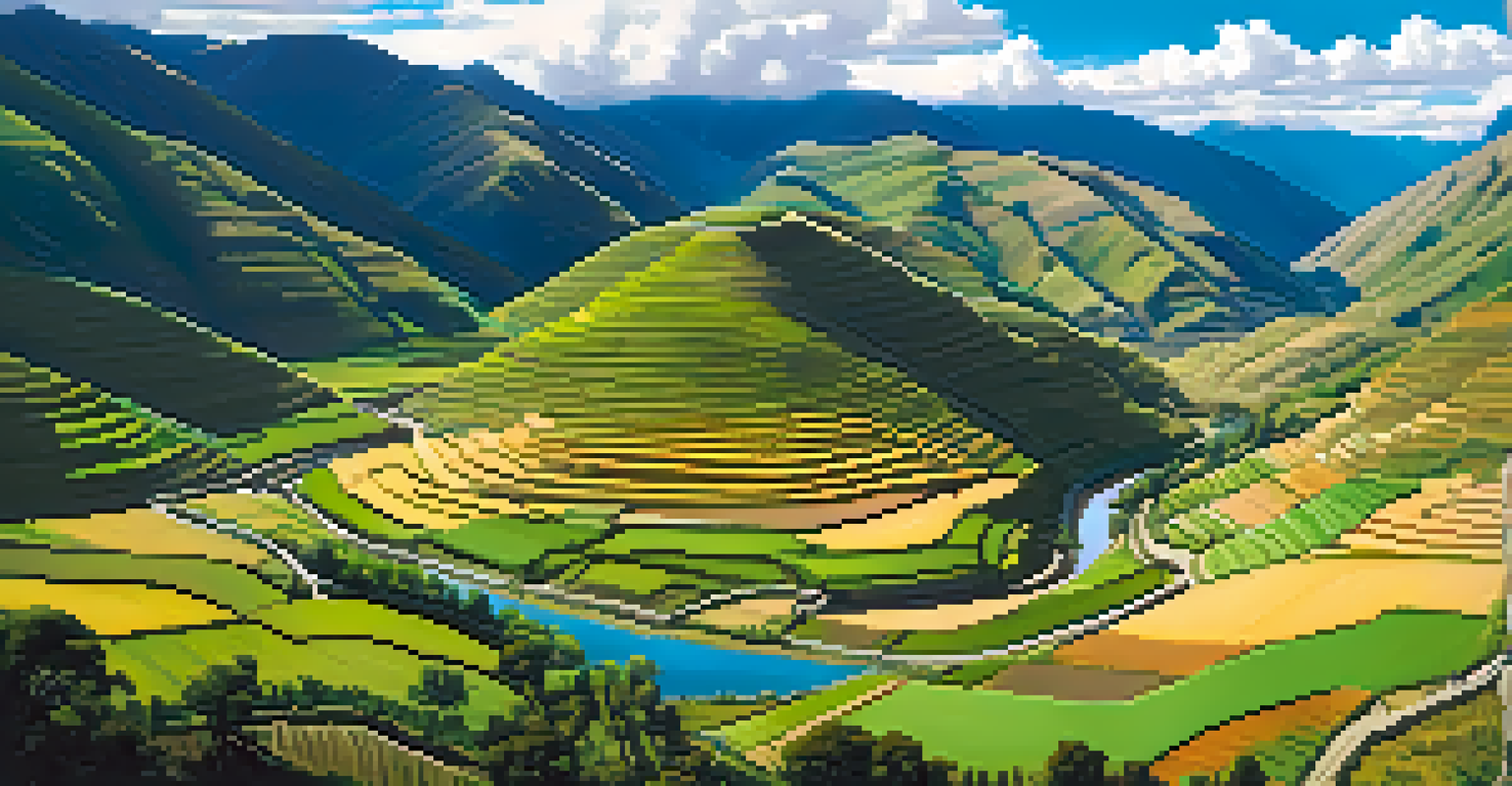The Impact of Tourism on Peru's Trade and Economy

Tourism as a Key Economic Driver in Peru
Tourism has emerged as a cornerstone of Peru's economy, contributing significantly to GDP. In recent years, the influx of international travelers has bolstered various sectors, from hospitality to transportation. For many rural communities, tourism provides essential income, helping to sustain local cultures and traditions.
Tourism is a vital source of income for many countries, providing jobs and opportunities for growth.
With iconic attractions like Machu Picchu and the Sacred Valley, Peru captivates millions of visitors each year. This surge in tourism not only enhances visibility for the nation but also attracts foreign investment, fueling further economic growth. As a result, more jobs are created, providing opportunities for Peruvians across different skill levels.
Moreover, tourism fosters entrepreneurship, inspiring locals to start businesses that cater to travelers, such as guided tours, artisan shops, and restaurants. This vibrant ecosystem not only supports the economy but also encourages cultural exchange, allowing Peruvians to share their rich heritage with the world.
The Role of Export Trade in Tourism Growth
Peru's tourism boom has a direct correlation with its export trade, particularly in goods that appeal to visitors. The export of traditional crafts, textiles, and culinary products has surged, providing local artisans with a broader market. This integration of tourism and trade creates a symbiotic relationship that benefits both sectors.

Additionally, the popularity of Peruvian cuisine has led to a rise in demand for food exports, such as quinoa and coffee. As tourists indulge in these local flavors, they often seek to bring a piece of Peru home with them, boosting the export industry. This not only enhances the country's trade balance but also supports sustainable agricultural practices.
Tourism Boosts Peru's Economy
Tourism significantly contributes to Peru's GDP, creating jobs and fostering local entrepreneurship.
Furthermore, increased trade opportunities can lead to improved infrastructure and services, which in turn enhances the tourist experience. Better roads, airports, and connectivity ultimately make it easier for travelers to explore Peru’s wonders, perpetuating the cycle of economic growth.
Employment Opportunities Created by Tourism
The tourism sector in Peru is a significant source of employment, particularly in regions heavily visited by travelers. Jobs in hospitality, guiding, and transportation have flourished, providing livelihoods for thousands of families. This employment not only helps individuals but also stimulates local economies.
Traveling – it leaves you speechless, then turns you into a storyteller.
Moreover, tourism-related jobs often come with training opportunities, enhancing the skill sets of the workforce. This investment in human capital is essential for a country's economic development, as it prepares residents for a variety of roles within the expanding tourism industry. Skills learned can also transfer to other sectors, fostering overall economic resilience.
As tourism continues to grow, it also encourages the development of ancillary services, such as marketing and event planning, creating even more job opportunities. This ripple effect strengthens the economy as communities thrive and become more self-reliant.
Challenges Faced by Peru's Tourism Industry
While tourism brings numerous benefits, it also presents challenges that Peru must navigate. One major concern is the environmental impact of increased visitor numbers, particularly in fragile ecosystems like the Amazon and the Andes. Sustainable tourism practices are essential to preserve these precious resources for future generations.
Additionally, the over-reliance on tourism can create vulnerabilities in the economy. Economic downturns or global crises, such as pandemics, can severely affect tourist inflows, leading to job losses and reduced income for communities dependent on this sector. Diversifying the economy is crucial to mitigate these risks.
Cultural Exchange Drives Growth
Cultural interactions between tourists and locals enhance economic benefits and preserve traditions.
Finally, maintaining the authenticity of cultural experiences amidst growing commercialization is another challenge. Striking a balance between providing a memorable experience for tourists and preserving local traditions requires careful planning and community involvement.
Cultural Exchange and Its Economic Benefits
Tourism fosters cultural exchange, allowing visitors to engage with Peru's rich heritage. This interaction not only enriches the travel experience but also provides economic benefits to local communities. When tourists participate in traditional festivals or workshops, they contribute directly to the economy.
Moreover, cultural exchange promotes the preservation of customs and practices that might otherwise fade, reinforcing community identities. As locals share their stories and traditions, they raise awareness about their culture, which can lead to increased interest and visits in the future.
The growth of cultural tourism can also inspire government and private investment in the arts and heritage sectors. This support helps maintain historical sites and cultural institutions, which in turn attract more visitors and drive further economic growth.
Infrastructure Development Driven by Tourism
The expansion of Peru's tourism sector has necessitated significant infrastructure improvements. Upgraded roads, airports, and public transportation systems enhance accessibility for travelers and locals alike. This infrastructure development is vital for sustaining economic growth and improving quality of life.
Additionally, better infrastructure attracts foreign investment, as businesses look for reliable systems to support their operations. Enhanced connectivity can also lead to increased trade opportunities, further solidifying tourism's role in Peru's economy.
Sustainable Practices Are Essential
Focusing on sustainable tourism is crucial for balancing economic growth with environmental preservation.
However, infrastructure development must be balanced with environmental considerations and community needs. Successful projects should involve local stakeholders to ensure that developments benefit both tourists and residents, fostering a sense of ownership and pride.
The Future of Tourism and Economic Growth in Peru
Looking ahead, the future of tourism in Peru seems promising, with opportunities for sustainable growth on the horizon. Emphasizing eco-tourism and community-based initiatives can enhance visitor experiences while minimizing environmental impacts. By prioritizing sustainability, Peru can set an example for responsible tourism practices globally.
As the world continues to recover from recent challenges, travelers are increasingly seeking authentic experiences that connect them to local cultures. Peru's rich history, diverse landscapes, and vibrant communities position it well to attract these conscious travelers, driving further economic growth.

Ultimately, the synergy between tourism, trade, and local communities will be key to Peru's economic resilience. By embracing a holistic approach to tourism development, Peru can ensure that the benefits are felt widely, creating a brighter future for all its citizens.